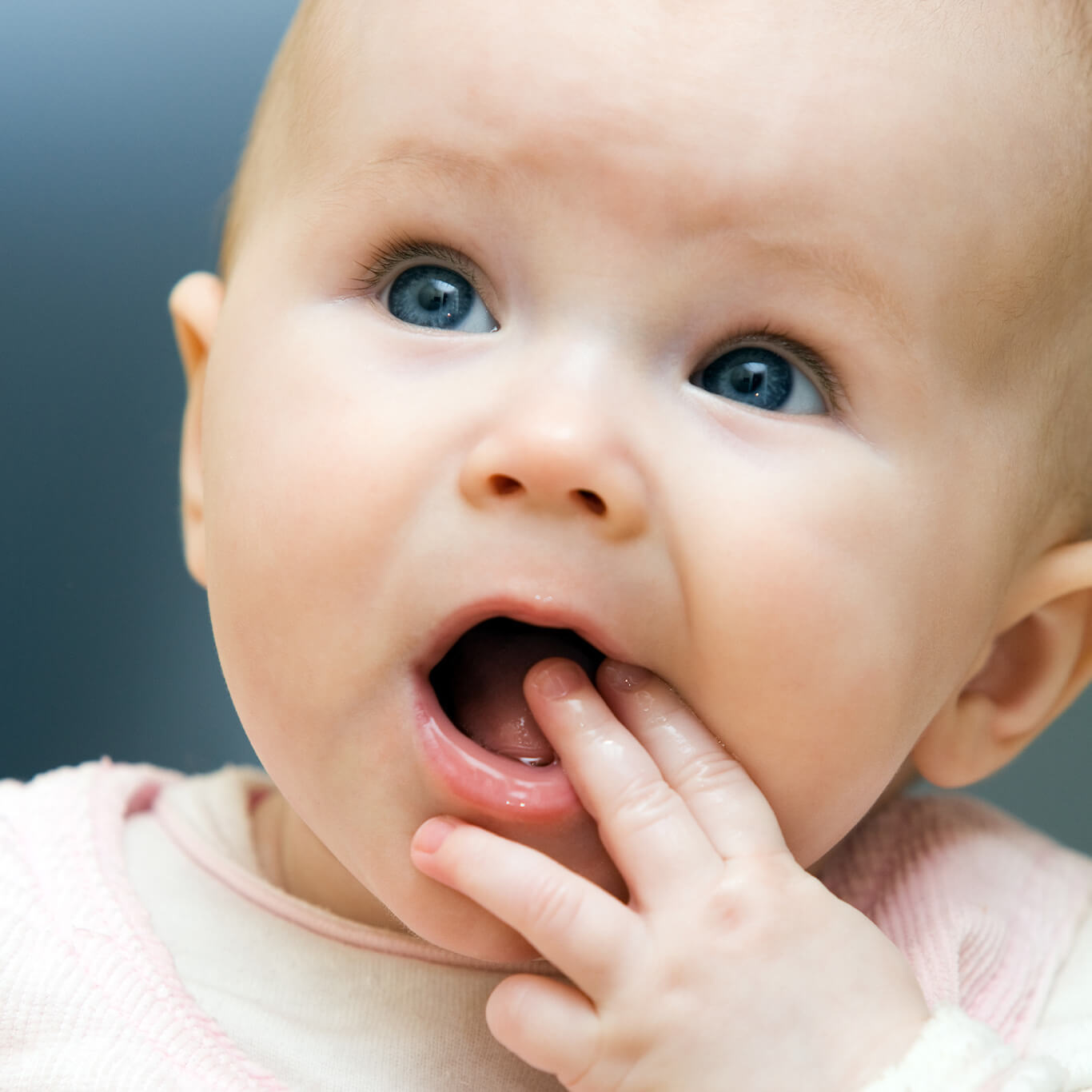
Tips for a Teething Baby
Are you wondering how to get you and your child through teething?
You’re not alone! To help, we’ve compiled some helpful tips for teething babies, including remedies and information on the stages of teething.
As individual as babies are, so is their journey through teething. Some babies are born with a tooth or two, some start teething around 4 months, and others not until after 12 months. The average age for the first tooth to pop through is about 6 months. By the age of 3, most children have all 20 of their baby, or primary, teeth.
The two front bottom teeth are usually the first to erupt. The top front teeth usually come in next, and the rest will fill in over the next couple of years.
General guidelines for the five stages of teething:
Stage 1: 0-6 months, primary teeth are present under the gums.
Stage 2: 6-8 months, first teeth erupt. Lower and upper front teeth first, then incisors.
Stage 3: 10-14 months, primary molars begin to emerge.
Stage 4: 16-22 months, canine teeth start to emerge.
Stage 5: 25-33 months, large molars erupt.
Stage 5 can be more painful than the other stages for some children, so be prepared and expect it may be necessary to try new and different ways of relieving the pain.
How do you know if teething has begun?
While some babies do not exhibit pain symptoms every time a tooth is starting to erupt, common symptoms to watch for include:
- Sore, red gums
- Mild fever
- Red cheeks
- Rash
- Rubbing the ears
- Increased drooling
- Chewing on things
- Being more fretful
- Not sleeping well

Some other common signs are chewing on fingers, fists, and various objects, excessive drooling, crying and crankiness, and lack of appetite.
Teething remedies
Every baby responds differently to teething remedies and parents may need to try various approaches to soothing and distracting babies and young children from teething pain.
Chilled, soft teething rings are ideal and can relieve gum pain as well as distract babies from it. Note that teething rings should only be chilled in the fridge and never frozen because gum tissue could be damaged by lengthy exposure to something frozen solid. Note: Liquid-filled teething rings can burst or leak, so should be avoided.
Babies 6 months and older can gnaw on cold raw fruit, as well as soft fruits, crusts of bread, and breadsticks to sooth their gums. Do not offer processed foods that contain sugar because that can lead to decay in baby teeth. Professional caution against teething necklaces or bracelets because these are choking hazards. Chewing on hard objects can also result in cracked and broken teeth.
Teething gels and OTC remedies
There is not a lot of evidence that teething gels work as well as the non-medical approaches above, and they should not be used until at least the age of 2. If your dentist recommends trying a gel, choose one that is specifically for children. You can also ask your pharmacist for advice on brands. Do not use teething gels that contain aspirin or benzocaine unless recommended by your dentist.
If a teething gel contains local anesthetic, it will only be available by prescription. Homeopathic gels are generally not effective and should be used only on the advice of your dentist. Babies should also not be given baby aspirin unless advised by a doctor.
Your dentist may recommend using liquid acetaminophen or ibuprofen during acute teething phases if your child is 3 months or older and is really struggling with discomfort.
Physical comfort and distraction
Normal soothing methods, gently massaging the baby’s gums with a clean finger, and distraction are excellent techniques for calming and comforting a teething baby.
Using a finger, washcloth, or clean gauze pad dampened with cold water to apply pressure to the gums can help ease gum pain.
Increased drooling can cause the skin to become irritated or develop a rash. Try to keep the cheeks and chin dry. A clean dry bib or soft cloth under the baby’s chin is also helpful for soaking up drool.
Distractions include going for a walk, playing a game, or doing various activities such as bathing to take the baby’s mind off his or her mouth.
Caring for newly erupted teeth
When the baby’s first tooth appears, start cleaning it gently to remove plaque and bacteria that can lead to tooth decay. Use a piece of wet soft gauze or a small, soft brush designed for infants with water. When teeth begin to touch, it is time to start gently flossing between them. This will ensure that your baby becomes used to and will tolerate tooth cleaning as well as keep the teeth free of decay.
| Both decay and broken-down teeth may result in the necessity for restorations or a pediatric crown. Cheng Crowns pediatric dental crowns, which are available in either resin-covered stainless steel or tooth-colored zirconia, will help protect the damaged primary tooth until the permanent tooth erupts. |
Resources
Baby teething symptoms. National Health Service. Available at https://www.nhs.uk/conditions/baby/babys-development/teething/baby-teething-symptoms/. Accessed May 31, 2023.
Tips for parents: tooth decay. American Academy of Pediatric Dentistry. Available at https://www.mychildrensteeth.org/age-group-resources/tips-for-parents/ Accessed June 7, 2023.
How can I help my child through the teething stage? Smiles in Motion. Available at https://sim4kids.com/kids-dentist-blog/how-can-i-help-my-child-through-the-teething-stage/. Accessed May 31, 2023.
Stages of teething and helpful hints. Kids Dental. Available at https://www.kidsdentalonline.com/dental-topics/baby-dental-topics/stages-teething-helpful-hints/ . Accessed June 3, 2023.
Tips for helping your teething baby. National Health Service. Available at https://www.nhs.uk/conditions/baby/babys-development/teething/tips-for-helping-your-teething-baby/#:~:text=Comforting%20or%20playing%20with%20your,clean%20finger%20may%20also%20help. Accessed May 31, 2023.